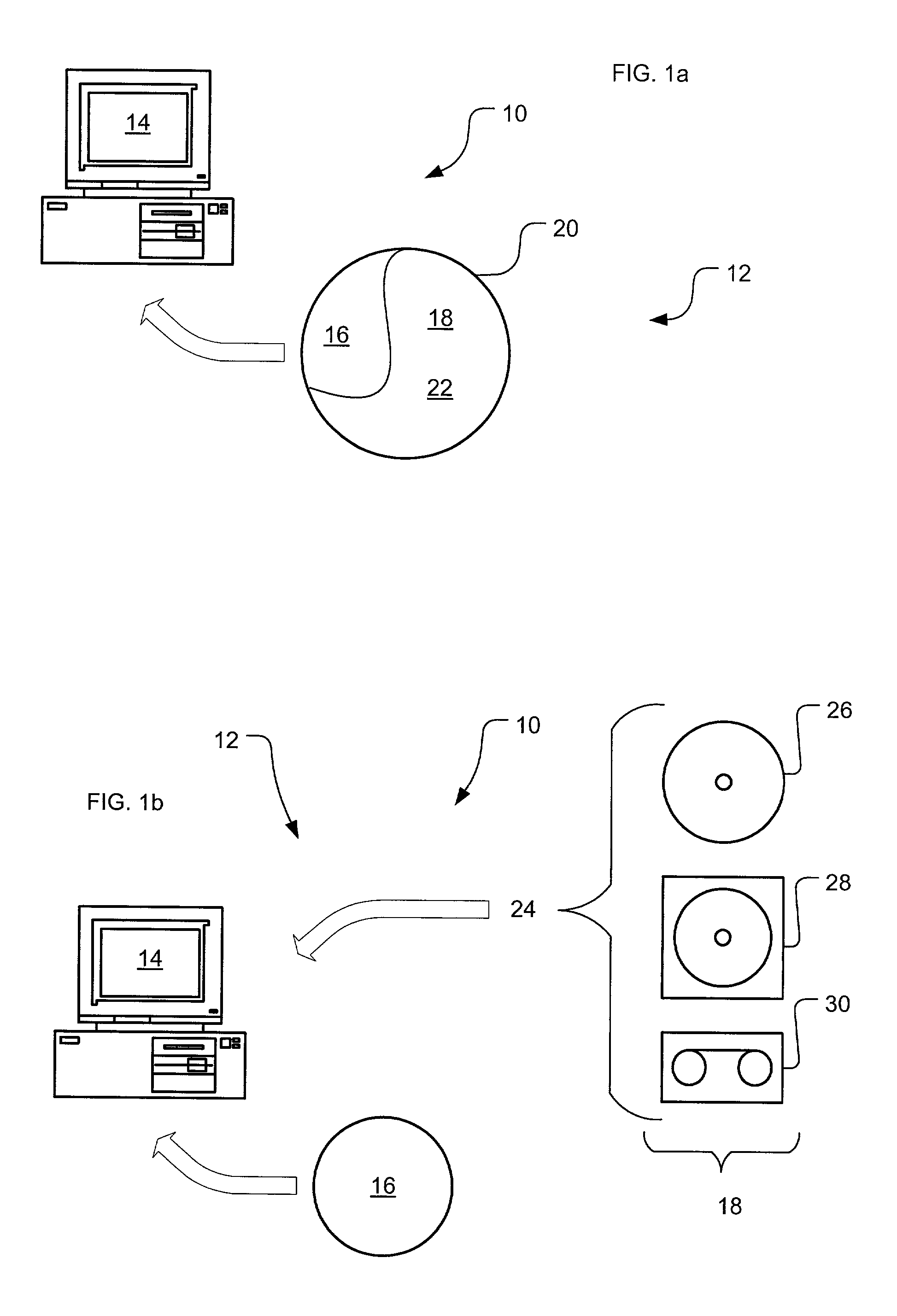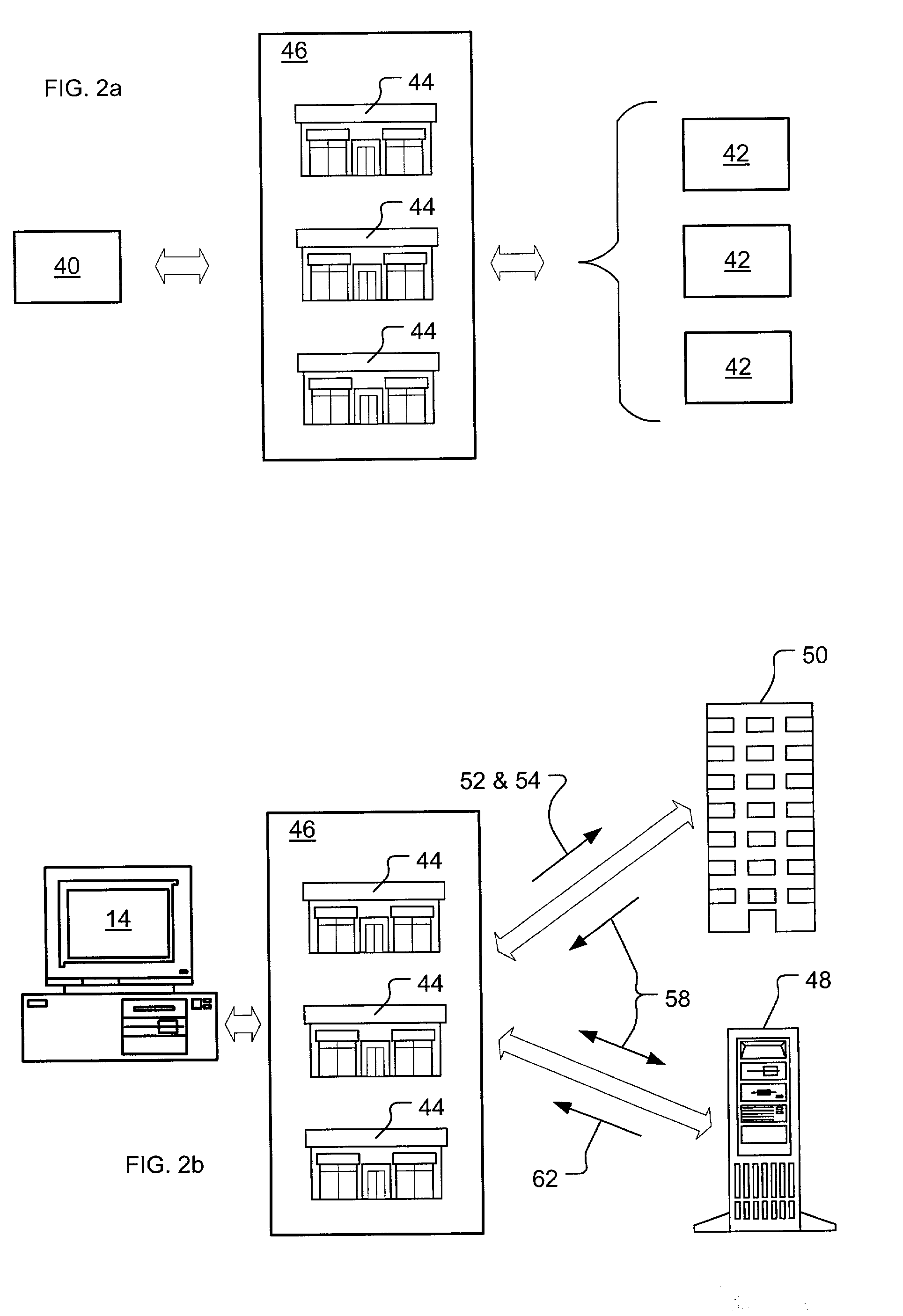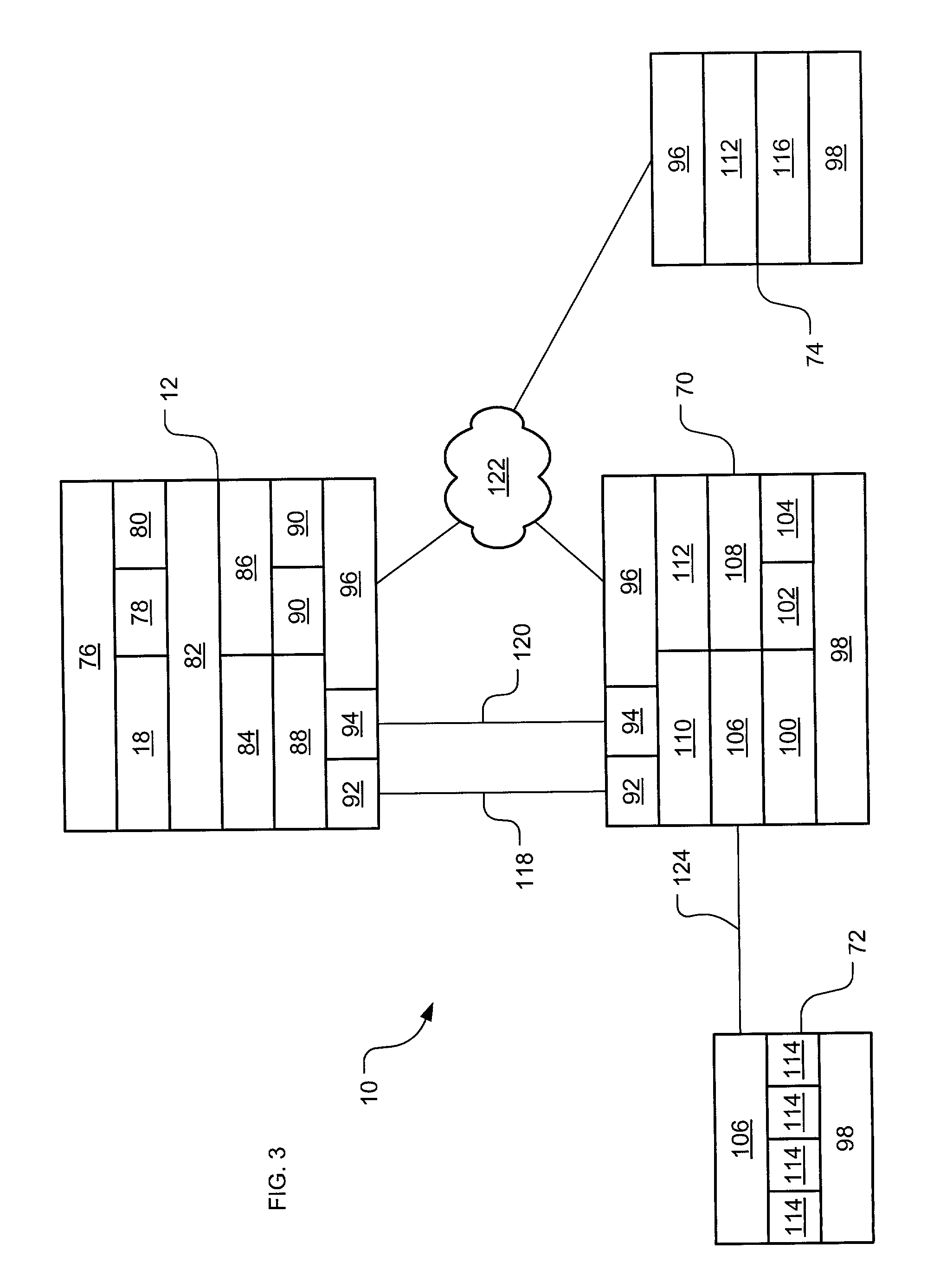Local portal
a technology of local portals and portals, applied in the field of local portals, can solve the problems of increasing the trend, increasing the amount of information used, so as to facilitate payment and accountability of all parties, reduce the problem of who is to blame, and increase the willingness of users to pay
- Summary
- Abstract
- Description
- Claims
- Application Information
AI Technical Summary
Benefits of technology
Problems solved by technology
Method used
Image
Examples
Embodiment Construction
Definitions
[0355] 3rd Party: An individual or company not directly involved in the transaction.
[0356] Aisle: A subset of the store which contains digital content assets.
[0357] BOB: "Bag'O Bits."
[0358] E-BOB: Encrypted BOB.
[0359] U-BOB: Unencrypted (or decrypted) BOB
[0360] BWTP: BackWeb's transport protocol.
[0361] CD: Compact Disk.
[0362] CTS: Central Transaction Server
[0363] CUS: Central Update Server
[0364] Clearing House: A partner in the purchase process who clears the financial instrument, e.g., credit or debit card.
[0365] Collateral: Displayable attributes, including but not limited to "box / icons", ads, data sheets, 3rd party opinions, etc. All of the displayable information associated with an intellectual property or digital content, but not the item itself, plus all advertisements (including those for things other than digital content carried by the store).
[0366] DVD: Digital Versatile Disk. A high capacity removal media.
[0367] GIF: A file extension defining a graphic file. (Gr...
PUM
 Login to View More
Login to View More Abstract
Description
Claims
Application Information
 Login to View More
Login to View More - R&D
- Intellectual Property
- Life Sciences
- Materials
- Tech Scout
- Unparalleled Data Quality
- Higher Quality Content
- 60% Fewer Hallucinations
Browse by: Latest US Patents, China's latest patents, Technical Efficacy Thesaurus, Application Domain, Technology Topic, Popular Technical Reports.
© 2025 PatSnap. All rights reserved.Legal|Privacy policy|Modern Slavery Act Transparency Statement|Sitemap|About US| Contact US: help@patsnap.com



